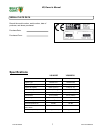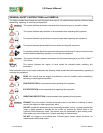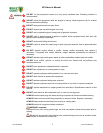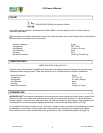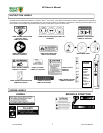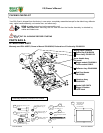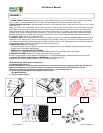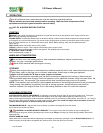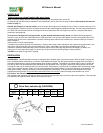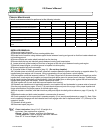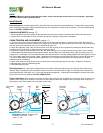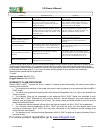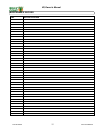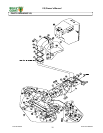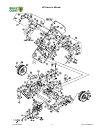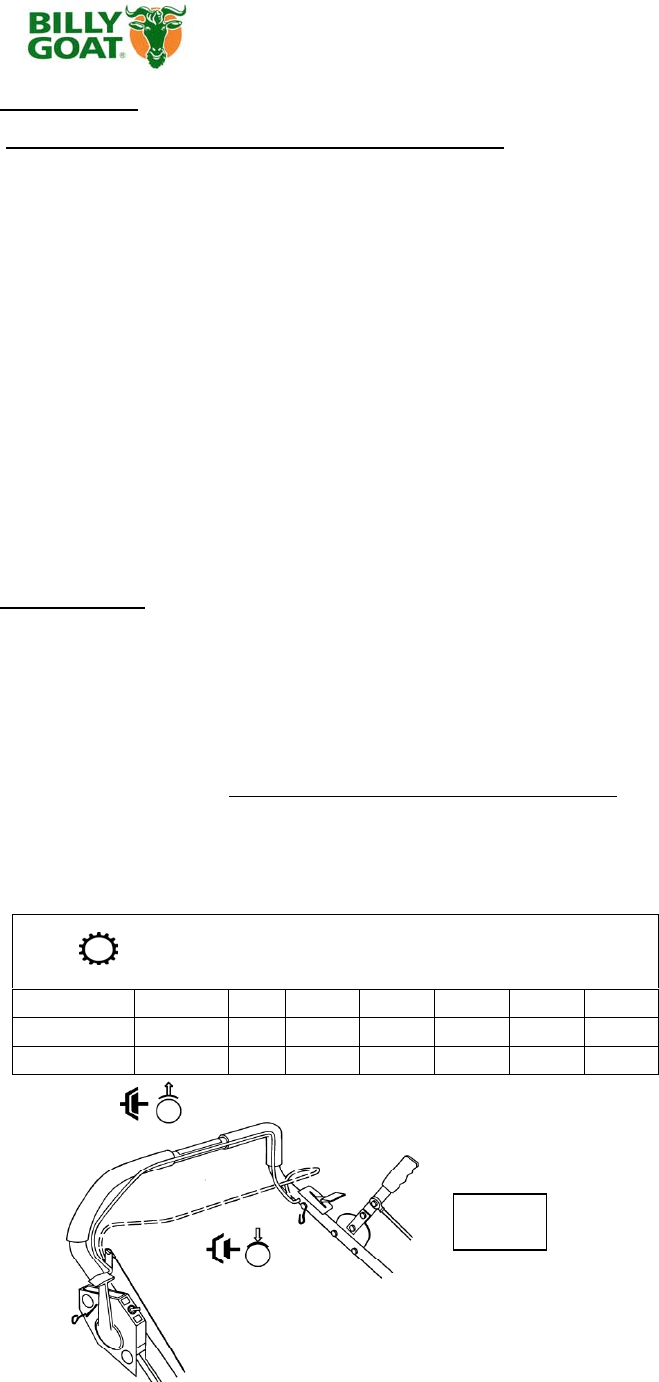
Part No 830542 Form No F062007A
11
VQ Owner’s Manual
Drive Gear selection @ (3400 RPM)
Position Rev.
N 1 2 3 4 5
MPH 3.0
0 1.9 2.7 3.4 4.0 5.1
KPH 4.8 0 3.1 4.4 5.5 6.5 8.3
DEBRIS BAG
Debris bags are normal replaceable wear items.
Note: Frequently empty debris to prevent bag overloading with more weight than you can lift.
A
n optional bag and dust cover is available for use where debris will be vacuumed in dusty conditions (See Optional Accessories
shown on page 1.)
DO NOT place bag on or near hot surface, such as engine. Run engine at 1/2 throttle for first 1/2 hour to condition new bag. Your
new bag requires a break-in period to condition the pores of the material against premature blockage. The entire bag surface serves
as a filter, and must be able to breath to have good vacuum performance. Be sure engine has come to a complete stop before
removing or emptying bag.
This vacuum is designed for picking up trash, organic material and other similar debris (see Safety Warnings page 4-5).
However, many vacuums are used where dust is mixed with trash. Your unit can intermittently vacuum in dusty areas. Dust is the
greatest cause of lost vacuum performance. However, following these rules will help maintain your machine's ability to vacuum in
dusty conditions:
•Run machine at idle to quarter throttle.
•The debris bag must be cleaned more frequently. A vacuum with a clean, pillow soft bag will have good pickup performance. One
with a dirty, tight bag will have poor pickup performance. If dirty, empty debris and vigorously shake bag free of dust.
•Machine or pressure-wash debris bag if normal cleaning does not fully clean bag. Bag should be thoroughly dry before use.
Having one or more spare debris bags is a good way to reduce down time while dirty bags are being cleaned.
•DO NOT leave debris in bag while in storage.
PROPULSION
PROPULSION: VQ self-propelled vacuums are equipped with 5 forward gears, neutral and reverse. With the engine running, the
bail in released position and brake in on position, select desired drive gear. Pull bail against handle to engage drive (see figure 7).
Smoothly engage the bail. Parking brake engages when the bail is released. To freewheel, set transmission control in neutral and
pull back on bail. Use good judgment when operating the self-propelled drive. Fifth gear is faster than walking speed and should
normally be used only for moving quickly from place-to-place. Using neutral, on level terrain is advisable when maneuvering in tight
areas. This increases operator control, and can prevent bumping into nearby objects. Do not force-shift gears of transmission. To
assist gear meshing, it may be necessary to partially engage bail while shifting. To stop machine, release operator's bail (this
engages the parking brake). Do not shift the transmission while unit is moving
. Internal damage to transmission can result
For reverse - Set Throttle to Idle
With operator's bail released, pull shift lever back and depress wire stop (item 90) to continue to the reverse position. Then smoothly
pull operator's bail against handle. Release bail to stop (see fig 7).
Fig. 7



